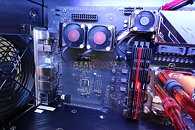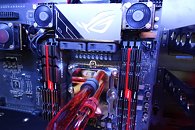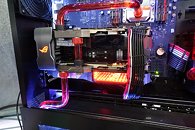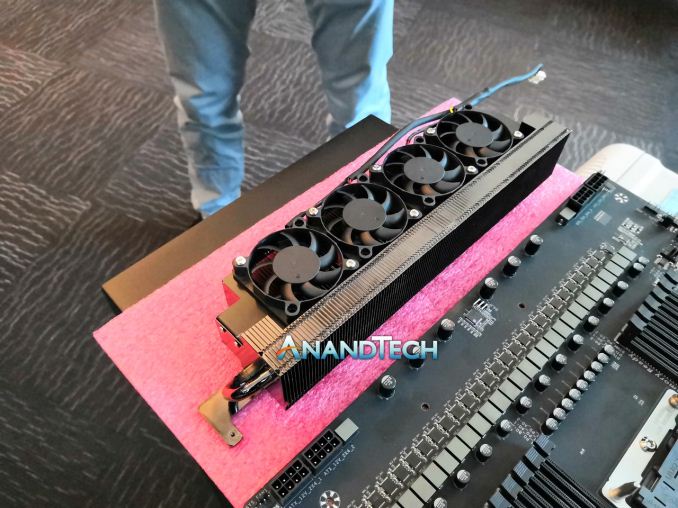- Joined
- Oct 9, 2007
- Messages
- 47,683 (7.42/day)
- Location
- Dublin, Ireland
| System Name | RBMK-1000 |
|---|---|
| Processor | AMD Ryzen 7 5700G |
| Motherboard | Gigabyte B550 AORUS Elite V2 |
| Cooling | DeepCool Gammax L240 V2 |
| Memory | 2x 16GB DDR4-3200 |
| Video Card(s) | Galax RTX 4070 Ti EX |
| Storage | Samsung 990 1TB |
| Display(s) | BenQ 1440p 60 Hz 27-inch |
| Case | Corsair Carbide 100R |
| Audio Device(s) | ASUS SupremeFX S1220A |
| Power Supply | Cooler Master MWE Gold 650W |
| Mouse | ASUS ROG Strix Impact |
| Keyboard | Gamdias Hermes E2 |
| Software | Windows 11 Pro |
This Tuesday at its Computex presser, Intel unveiled an unnamed 28-core/56-thread HEDT (client-segment) processor that's capable of being bench-stable at 5.00 GHz. The chip is a client-segment implementation of the Skylake XCC (extreme core count) silicon, which features 30 Mesh Interconnect "tiles," of which 28 are cores and two integrated memory controllers. The XCC silicon features a 384-bit wide (6-channel) DDR4 memory interface, and it turns out that whatever SKU Intel is planning, will require a different motherboard from your X299 board that can handle up to 18 cores and 4-channel memory. It will require a client-segment variant of the LGA3647 enterprise socket from the Purley platform. One of the first of these is the ASUS Republic of Gamers (ROG) Dominus.
Clearly bigger than ATX, in being either E-ATX or SSI form-factor, this board draws power from two 24-pin ATX, two 8-pin EPS, and three 6-pin PCIe, and has a gargantuan 16-phase VRM with two fan-heatsink blocks. Six DDR4 DIMM slots flank the socket, three on either side, each with its dedicated 64-bit wide path to the socket. The XCC silicon features a 48-lane PCI-Express gen 3.0 root complex, and so the board could feature at least two PCI-Express 3.0 x16 capable of full bandwidth, among a boat load of PCIe based storage connectivity, and onboard devices.





Update: This motherboard may have been a quick modification of the WS C621E SAGE, by removing one of its sockets, and modifying the rest of the board accordingly. Prototyping a board like that, for a company with ASUS' resources, would barely take 2-3 weeks by our estimate.
View at TechPowerUp Main Site
Clearly bigger than ATX, in being either E-ATX or SSI form-factor, this board draws power from two 24-pin ATX, two 8-pin EPS, and three 6-pin PCIe, and has a gargantuan 16-phase VRM with two fan-heatsink blocks. Six DDR4 DIMM slots flank the socket, three on either side, each with its dedicated 64-bit wide path to the socket. The XCC silicon features a 48-lane PCI-Express gen 3.0 root complex, and so the board could feature at least two PCI-Express 3.0 x16 capable of full bandwidth, among a boat load of PCIe based storage connectivity, and onboard devices.





Update: This motherboard may have been a quick modification of the WS C621E SAGE, by removing one of its sockets, and modifying the rest of the board accordingly. Prototyping a board like that, for a company with ASUS' resources, would barely take 2-3 weeks by our estimate.
View at TechPowerUp Main Site









